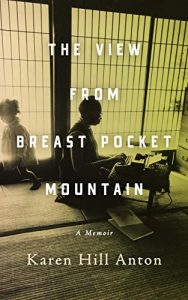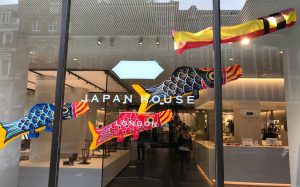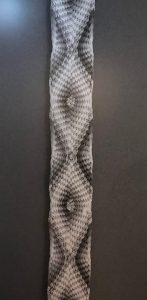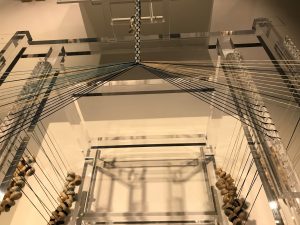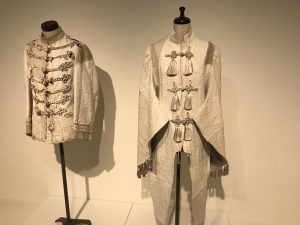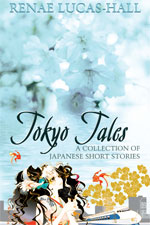Check Out this AI video for my books at Cherry Blossom Stories!
‘The View From Breast Pocket Mountain’ – Karen Hill Anton’s Memoir is an Absolute Must-Read
The opening paragraph of Karen Hill Anton’s memoir conveys the promise of a well-written story full of powerful life lessons and inspirational anecdotes, despite the sadness on the first page. Anton explains how she was only nineteen years of age, but already traveling in Europe when everything she owned and valued was burned and ruined in a fire in the tenement apartment where she grew up in Harlem. Anton’s story blossoms and blooms into a delightful memoir covering themes dealing with motherhood, cross-culturalism and cultural homogeneity, courage, creativity, conventionalism, and liberalism, as well as love, loss, and the ability to endure the unbearable with patience and dignity.
Anton’s childhood was daunting. Whenever she sees brightly colored marigolds, she remembers visiting the mental institution where her mother lived full-time. She was raised by her father who worked long hours as a tailor, doing everything he could to provide for his children. This accomplished writer matures early. She delights the reader with stories of her work experience in her twenties in countries such as Denmark and Switzerland where she meets fascinating and famous people like Elizabeth Taylor and Richard Burton. She works sporadically while trying to raise her baby as she hitchhikes and rides second-class on trains, wandering from one country to another, before moving to Vermont in the US, “a place that embodies the ideas of a hippie revolution without the accompanying dysfunction.” (p. 89).
Anton’s love and respect for her father are transparent throughout the book. On page 8, she says she has inherited his generous smile. Some people just think about how much money they’ll inherit from their parents, but this kind-hearted author is grateful for her smile that reminds her of her dad every time she looks in the mirror or at a photo of herself. When she hears her father has been attacked and he’s in hospital, Anton rushes to his bedside. Her poignant words describing her distress evoke a keen sense of hopelessness and regret: “I’d never experienced tragedy before. I didn’t know the paradox of how it shows up with distinct, sharp, ugly lines, deep colors, and loud sounds, and then switches into lines that are blurred, vague, gray, and all sound comes through muffled.” (p. 83).
A visit to Boston reunites the writer with her friend and future husband, William (Billy) Anton. They share an interest in books and Zen Buddhism. Billy also introduces her to “the films of Kurosawa, natural foods, the philosophy of Bertrand Russell” (p.76) as well as macrobiotics, vegetarian cooking, and Japanese cutting techniques. (p. 79). Billy accepts an invitation to study at a yoga and martial arts dojo in Japan and the writer and her daughter Nanao decide to join him but first, they decide to take an unorthodox road trip through Europe and South Asia.
Anton expands on the importance of introducing her child to different cultures but she’s also well aware of the dangers and her worries prove she’s a thoughtful and capable mother. She senses that “even with her young eyes she’d see that people are basically alike—not in our cultures, surely, but in our humanity. And I hoped that she would see the world as I did, and find, as I had, that most people are kind and helpful and that the world we call Earth is a wonderful place full of endless lessons” (p. 154/155).
Nanao is five-years-old when they arrive at Haneda Airport in Japan to study at the Yoshida Yoga Doja. Finally, “we had our place in a group where nothing mattered more” (p. 141). This lifestyle which relies heavily on rules and mundane, repetitive order is just what they need after the uncertainty of constant traveling and not knowing where they were going to rest their heads at night.
Anton and Billy eventually get frustrated with the restrictions placed upon them at the dojo, and they move to a farmhouse on Futokoro Yama or Breast Pocket Mountain. Anton has an unfulfilled desire to start taking lessons in shodo Japanese calligraphy so she presents the honorable eighty-three-year-old teacher Roppo-sensei with a loaf of homemade bread to show her gratitude for being introduced. She’s immediately accepted into his group of willing students. Anton still practices the art of calligraphy today.
The writer remains positive, enjoying her days at the farmhouse and the kotatsu and ofuro bath in particular, but life becomes increasingly difficult. The isolation and lack of modern conveniences are exhausting. She also realizes that “I just had to accept the fact that at no time and nowhere would I go unnoticed” (p. 176) as a gaijin or outsider. However, the fact this farmhouse is mentioned in the title proves that Anton learns significant life lessons and enjoys memorable experiences here. A visit to a fertility expert at this time results in a quick pregnancy and she has a wonderful birthing experience thanks to Dr. and Mrs. Mizumoto who show her the difference between a hospital and great hospitality (p. 181).
The drawbacks at the farm become overwhelming and they decide to move when she’s heavily pregnant with her fourth child Lila into a house with imperial connections in Hamamatsu. “Empress Teimei – the mother of Emperor Shōwa, great-grandmother of the current emperor, Naruhito – had once spent a night there.” (p. 194).
Anton mentions several times throughout the book how much she enjoys the safety Hamamatsu and Tokyo have to offer and she loves the “equality of educational opportunity in this country” (p. 240). These factors are two of the main reasons for her staying in Japan and why she decides to raise her four children here.
Anton goes above and beyond to break down cultural barriers by talking at kominkan community centers in rural areas. She also teaches modern dance and continues to do this for 10 years. There’s a terrific photo on page 24 of the author dancing at George Washington High School. Her body is in flight mid-air, defying gravity, and her face expresses a look of quiet exhilaration. Anton has also written several regular columns for The Japan Times, including “Hamamatsu Highlights” and “Crossing Cultures”. She offers sound advice to anyone living in Japan, explaining the ways she has learned to fit into Japanese society. “I had no desire to be seen as Japanese or even acting Japanese. I would stand out in Japan, always. But I could also fit in. (p. 216).
Anton stresses the fact you don’t need to be perfect in Japan as a mother. Living in the Land of the Rising Sun can be stressful if one is constantly comparing oneself with Japanese women who seem to be able to carry out life’s challenges flawlessly. Anton has learned to fall into line and to adopt the attitude “Do it now and get it over with” (p. 219) when it comes to school rules and requirements. Her life motto is “I’ll deal with it when I get there” (p. 134), making her a courageous and unstoppable force for good. But it’s Japan and the Japanese people who have taught her and her children that depending on others and interdependency is natural and “it supports the smooth functioning of society, and is crucial for our species”. (p. 278).
The Japanese have a proverb “The bamboo which bends is stronger than the oak which resists” or「竹はよわく弯がるが木は剛く立つ」. This book proves that Karen Hill Anton has taken this to a whole new level. Every day, she tries to live her best life with an open and flexible heart. When she faces a difficult task, Anton makes compromises while she tirelessly attends to the needs and wants of her family and friends and the people she meets along the way in Japan or in one of the many countries she has visited along the way.
Kumihimo: Japanese Silk Braiding – A Must-See Exhibition at Japan House London
My husband and I went to London to watch the coronation of Charles III and Camilla and the procession on the 6th of May and I’m so pleased we had time to see the Kumihimo Japanese silk braiding exhibition by Domyo at Japan House London on the same day.
Kumihimo is an intricate, decorative braided cord from Japan. This fascinating UK exhibition runs from 23 February until 11 June 2023, exploring this ancient yet contemporary Japanese art.
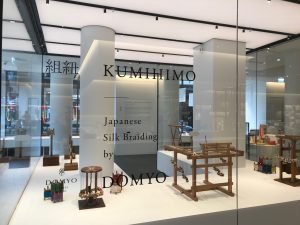
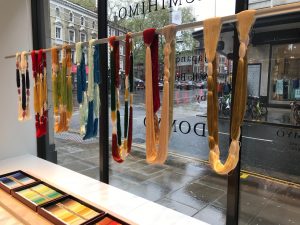
Literally translating as ‘joining threads together’, kumihimo is characterized by its vivid colours and intricate patterns, and is created by expert craftspeople who combine up to 140 hand-dyed threads, often made of silk.
KUMIHIMO: Japanese Silk Braiding by DOMYO brings the story of Japanese braiding to life with floor-to-ceiling installations, absorbing video, creative displays of equipment and tools, and more than 50 different examples of the braids themselves, imaginatively presented throughout the gallery.
The exhibition is divided into three sections:
1. The History of Kumihimo, which explores its 1300-year past from the Silk Roads to samurai and kimono
2. The Structure of Kumihimo, which allows guests to get up close to the processes and fine details of the individual braids
3. The Future of Kumihimo, which encourages guests to join in the discussions on future kumihimo possibilities in fashion, fine art and science
The exhibition is produced by Yusoku Kumihimo Domyo (Domyo), a company located in the old shopping and entertainment district of Ueno in central Tokyo, which has been making braided silk cords by hand since 1652.
WORKSHOP
An Introduction to Kumihimo Braiding 組紐ワークショップ
Japan House London is also offering a beginners’ workshop and an introduction to Kumihimo braiding for just £9 per person. You need to book because there are only 5 places per session. I just wish I lived closer to London because I’d love to attend this.
During each small-group workshop, led by the Japan House London Visitor Experience team, participants can gain an understanding of the basic principles of kumihimo while creating a braided cord using silk threads and a marudai, a round braiding stand mounted on legs that makes it easy to braid a variety of kumihimo, even for beginners.

Japan House London is a fantastic cultural destination in London for anyone interested in Japan. Located on the corner of Kensington High Street and Derry Street, within a two-minute walk from High Street Kensington Station, Japan House London offers the very best of Japanese art, design, gastronomy, innovation, and technology.
Hello Spring Competition on Twitter! One Winner Four Prizes!
THIS COMPETITION HAS NOW CLOSED. THE WINNER IS REBECCA @rebsanjapan ON TWITTER.
It’s competition time again and this month I’m giving one lucky person living in the UK the chance to win all four prizes listed below. Just like and retweet this post on Twitter for your chance to win. The winner will be announced here on Saturday 15 April 2023. Good luck!
PRIZES
One signed copy of my book Tokyo Hearts: A Japanese Love Story
One copy of Japanese Inns and Hot Springs by British writer Rob Goss and Japanese photographer Akihiko Seki
One Amygdala Cherry Blossom Solid Perfume (actual size is smaller than image)
One Etude House Cherry Blossom Face Mask








